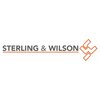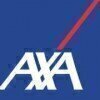
i
Guru Amardass International
Filter interviews by
Guru Amardass International Engineer Interview Questions and Answers
Guru Amardass International Engineer Interview Experiences
1 interview found
I applied via Naukri.com

(2 Questions)
- Q1. RCA, control plan ,SPC,
- Q2. What is PPK and cpk
- Ans.
PPK and Cpk are statistical process control measures used to assess the quality of a manufacturing process.
PPK measures the capability of a process to produce parts within specification limits
Cpk measures the capability of a process to produce parts within specification limits, taking into account the process mean and standard deviation
Both measures are used to determine if a process is capable of producing parts that ...
Interview Preparation Tips
Top trending discussions






Interview questions from similar companies

I appeared for an interview before Jun 2016.
Interview Preparation Tips
Experience: The first interview involved a case on acquiring land for a B-School. The case was mainly qualitative and the HR questions were also straightforward. Giving a thought to goals and aspirations helped
Round: Case Study Interview
Experience: The second interviewer was an IIT Delhi alumnus and asked me a case on whether a telecom company should go for exploring the 3G license option. He provided me with information as and when I asked for it. Later during the interview, I asked him about his experience with McKinsey
Round: Case Study Interview
Experience: My third interview was with a partner. Again, standard PI questions: something about yourself, why consulting, what if not McKinsey, important attributes of a good leader, why should we hire you etc. The case was on the design on entry and exit gates for Delhi Metro.
Round: Technical Interview
Experience: My final interview was again with a partner and there was no HR part. It started with a case, and then there was nothing else to discuss. Anything and everything that could possibly go wrong did. I did badly in the case and towards the end made errors with simple calculations as well. It is important to think on your feet even if you are not able to make much headway with the case. This case had sealed my fate and by the time they declared the results, I had made my plans as to what will I do next.
Intel

C,c++ ,javaa,python website etc
(1 Question)
- Q1. Technical Departments

I applied via Naukri.com and was interviewed in Jul 2024. There were 2 interview rounds.
Good coding test with spark coding
(2 Questions)
- Q1. Experience with project
- Ans.
Led a team in designing and implementing a solar power project for a rural community.
Managed project timeline and budget effectively
Coordinated with stakeholders and team members
Implemented innovative solutions to overcome challenges
Ensured project met quality standards and safety regulations
- Q2. Salary negotiation
Interview Preparation Tips

(2 Questions)
- Q1. React and virtual dom and life cycle
- Q2. Nextjs and it's core concept
- Ans.
Nextjs is a React framework that enables server-side rendering and other features for building fast and scalable web applications.
Nextjs is built on top of React and provides features like server-side rendering, static site generation, and API routes.
It allows for faster page loads and improved SEO performance compared to traditional client-side rendering.
Nextjs also supports automatic code splitting, hot module replac...
Interview Preparation Tips

I appeared for an interview before Feb 2024.
Discussion on the changes in tecehnology
Test followed by the questions and scenario based questions

I applied via Company Website and was interviewed before Mar 2023. There were 3 interview rounds.
Hacker Rank test with medium difficulty
(1 Question)
- Q1. Technical discussion mainly around system design, different architectures, problem solving and coding question may be asked.
A case study for a problem statement

I applied via Naukri.com and was interviewed before Nov 2020. There were 3 interview rounds.
Interview Questionnaire
3 Questions
- Q1. Golden rules Prepaid and accrual
- Q2. Excel knowledge
- Q3. What is Depreciation?
- Ans.
Depreciation is the decrease in value of an asset over time due to wear and tear, obsolescence, or other factors.
Depreciation is a non-cash expense that reduces the value of an asset on the balance sheet.
It is calculated by dividing the cost of the asset by its useful life.
There are different methods of calculating depreciation, such as straight-line, declining balance, and sum-of-the-years-digits.
Examples of assets th...
Interview Preparation Tips

I appeared for an interview before Jul 2021.
(1 Question)
- Q1. Tell me about your self
Grammar maths and geographical knowledge
(1 Question)
- Q1. About pervious organisation, handle escalation shipping cycle
Interview Preparation Tips
typing, apptitute , hr, manager

I applied via Walk-in
Interview Questionnaire
4 Questions
- Q1. There is a steel company with 2 plants in India. Now it has done recent acquisitions abroad. What should be the organizational structure that it should put in place in these places, and what are the pros a...
- Ans.
The organizational structure for the steel company's international plants should be a combination of centralized and decentralized structure.
Centralized structure: The company can have a centralized structure where decision-making and control are concentrated at the headquarters in India. This allows for consistency in operations, standardization of processes, and efficient resource allocation.
Decentralized structure: ...
- Q2. The IPL is a 20-20 league of cricket. It consists of city teams, with players from within the city, <21 years old, or players ‘bought’ via an auction process. Celebrities like Shah rukh khan own these team...
- Q3. There is a consumer finance company that is thinking of starting a unsecured loan at the point of sale in large retailers like Tesco, for consumers who want to buy white goods like TVs, fridges etc. Does s...
- Q4. There is a chairman of a conglomerate. He has been on the post for 10 years, and is extremely dominating. He treats the various business heads like children, not letting them take any major decision. While...
- Ans.
Identify 5 questions to address the dominating behavior of the chairman in a conglomerate.
Ask the business heads about their level of decision-making authority
Inquire about the chairman's communication style and interaction with the business heads
Gather feedback on the effectiveness of the performance management system
Assess the impact of the chairman's behavior on employee morale and motivation
Explore alternative lead
Interview Preparation Tips
Experience: I asked him some clarificatory questions on where all in the world have the plants to get an idea of the kind of local areas. He replied in US, Indonesia, Trinidad etc. I then proceeded to succinctly put the problem statement to he and he was ok with it. Then I asked for “some time to structure my thoughts” ☺. The structure I laid out was: 1. What is meant by ‘organizational structure’? Is our end goal to figure out the number of levels in an organization, the number of people at each level and the skill they require? 2. Understand the goal of the organization: a cost focus or a responsiveness focus, whats important in this industry? 3. Map the existing processes that the company is involved in (value chain) and look at how best the goal of the organization can be served with: a. Existing company people redeployed to the new countries b. People from the acquired companies to continue working c. New people to be hired It seemed that he was looking for something else in the structure that I missed as indicated by his body language. However, he answered my queries – For point 1 he said I should look at a broader picture of what an organizational structure means. What I had defined was a very micro view. For point 2 he said I can assume an undifferentiated product market and that cost is the main focus. Here I pointed out that since we are acquiring he plants, the main concern in the short term maybe quick ramp up of the plant. He liked that and said that there are actually 3 measures that we will rate our structure on: - Ramp up time - Cost - Accountability of the plant employees of its performance For point 3 he said it might not be so relevant to our discussion!! Clearly I was in a situation where I didn’t know what hit me since I thought I completely missed what he wanted on 2 of my three points. However I kept calm and asked him what is the way to understand the org structure? He said think about how it was organized in ITC. So I said: 1. Since ITC is a conglomerate, it has a structure of various businesses or divisions which function independently. A ‘Corporate’ division is common to all. 2. Within each division there are functional verticals like the Marketing function, Technical function, HR, Finance functions. Shirish liked the way I described the structures in ITC so he said good. He said that that is a macro ‘Product’ structure of businesses around products like cigarettes, paperboards, clothes. Then he probed me on what could be other structures? I replied that the sub-structure of ‘Functions’ like marketing, HR etc could be the macro structure itself. He said that’s the 2nd, what else? Then we had a discussion on other kind of structures and he led me to two other kinds – ‘Geographical’ and ‘Type of Customer’. Then I started to list of pros and cons of each structure. However he said are you missing the criteria, so I quickly referred my notes and realized that he had given the 3 measures to rate each structure earlier – ramp up time, cost and accountability. I then ranked each on the above and after a discussion with him concluded that we should start with a functional set up to ensure quick ramp up and then move towards a geographical set up to ensure the local accountability, and minimization of costs. He was happy with the way I recovered and synthesized. He then went on to explain that actually they went in with the geographical setup directly, and the functional setup was a pseudo layer on top, as there were ‘functional specialists’ that traveled to a location to ensure quick ramp up. Then He said is there anything else I wanted to know from him. Then I told him that in our previous meeting we had not talked about the challenges of working with the govt sector. So he talked on that for around 5 mins.
Tips: 1. Proceed in the interview the way the interviewer wants you to. If he wants a free-flowing discussion, which was the case here once I laid out my structure, be flexible to do so. However, keep a track of open ends on your structure.
2. Don’t hesitate to ask the interviewer for help in case you are stuck. In my case it helped me a lot.
3. Don’t get flustered if stuck. Persevere and be calm.
Round: Case Study Interview
Experience: Clarificatory questions from my side helped me understand what happens when a company sponsors the tournament. He replied that the tournaments might be branded like “Gold Flake Open”, and the company gets rights like logos on uniforms and on the cricket grounds, title rights etc. I asked about the duration of the tournament etc. Then I took time and laid out the valuation framework. Discounted cash flow analysis and NPV calculation, for which we will discuss the revenues, costs, and the discount rate. I gave details of revenue sources, cost heads. He said lets focus on the revenue sources. Here my proposition was that there could be an increase in the number of people (Users) or the number of times existing users smoke (Usage) due to the advertising in the IPL. He seemed satisfied with this hypothesis and asked me to go on. So I sought to define first the target segments. There was a simple quant test here. I used the urban Indian population (since rural people smoke bidis predominantly) of 30% of 1B, and assuming a life expectancy of 60 years and that smokers start from the age of 20 years got a figure of 200M smokers in India. Out of this assuming 1:1 male-female ratio, we arrived at 100M male smokers (assumed females don’t smoke). He now told me that actually there are only 10M smokers in India. So then I discussed that now we have to delineate the factors why people take up smoking (purchase drivers), and clearly figure out those people who took up smoking by seeing the IPL advertisements or related promotions. Also I mentioned that this would be a challenge to do practically on the ground. So how does the 10M number change (market expansion or increase in users) was part 1, and how much more do the 10M smoke (usage) was the other effect we need to consider. Then heasked me how we can make sure that we convert the advertising into sales. I knew he wanted to get some creative answers, so I said maybe stock up in the shops outside the stadiums, or mobile vendors (and more suggestions I don’t remember now). I did mention that advertising is banned in India for cigarettes and we would have to be careful in the suggestions. He was happy with the discussion on the revenues part. He asked me where would the new smokers come from? Would they be new or would they come from competition brands? Then we discussed a lot on the kind of up-trading that happens in cigarettes, namely, people who smoke bidis move onto cigarettes, and people who smoke small length cigarettes move up and start smoking ‘kings’ type cigarettes. Finally we came onto the valuations part to understand what should be the money ITC should be willing to pay. I explained the free cash flow formula, and how we would use it over the years to calculate the NPV. We had a small summary discussion here. Then he asked me if he had any question for me. I asked him does he feel the urge to do more ‘implementation’ work in McK since he is a doctor, and that I feel that I might get bored of doing only ‘strategy’ kind of work. He resonated the feeling and explained in depth what projects he had done and that a large % is implementation.
Tips: Here he clearly told me that he was not interested in too much structuring, so I reduced my writing but continued to speak all my answers in a structured manner. The interviewer felt nice that I responded to his style. So point is, adapt yourself to the situation, yet maintain the poise in your answers, don’t completely relax. Also please use the opportunity in the end to ask questions that you really want to get answers of. Link them up with the background of the interviewer. This shows commitment and preparation, and builds a last minute connection with the interviewer. Also be clear of the intricacies of the business you came from, it helps a lot if the case dwells on a similar topic.
Round: Case Study Interview
Experience: Clarificatory questions included understanding the types of products sold in the point of sale, the various stakeholders involved in the transaction. The 2nd question hit a chord with , he smiled and said that there are three stakeholders, the Retailer (Tesco or someone else), the Consumer Finance Company, and the Consumer. I knew at this point that I had to concentrate on each one separately. I laid out a simple structure of looking at the costs and benefits (or positives and negatives) for each stakeholder by getting into the scheme. He was ok with this, in fact he said this is exactly how it should be looked at. I started with the Retailer and said that there are only benefits since they get the sales revenues that earlier were not got since the consumers did not have funds. So the Retailer clearly wanted the scheme. For the Consumer Finance company I said that the cost would be the cost of raising the money to fund the loans which would depend on the default rate of these consumers. The benefit would be the interest that the consumer would pay on the loan. Then we had a discussion on how to estimate this default rate. Here I said we could use data from similar loan schemes in other countries since the type of product and the cost of the white goods (20-40K in this case) plays a role, or default rates on loans on other products in the particular region, since location and local demography also plays a role. Another benefit could be that a consumer finance company could occupy mind space with the consumers who might buy other products like home loans, car loans etc from the company in future. Overall, a consumer finance company might be keen to enter into this loan. For the consumers, He asked why would a consumer buy a loan from this company and not go the branch elsewhere and take a loan. I said that the convenience of getting the loan at the point of purchase was the single largest factor for the consumers. Also I added that now they would be able to purchase high value items higher in prestige value that they could not afford earlier, so impulse purchase might increase.On the whole, based on a discussion with he, I concluded that the consumer finance company would need to be cautious in proceeding with the loan since the default rates are not predictable. He inquired a way to solve this problem and I suggested that the loans be launched for selected products and consumer segments to start with as a pilot, and then expanded to other products and consumers.
Tips: Asking relevant questions in the beginning of the cases really helps as the interviewer starts helping you more, or will reveal information that would be critical in the case. Prepare the basic questions on leadership and teamwork well. This means they should be personalized, not the typical definitions. The examples should be crisp and explain the point well. Showing energy and impact during such answers is crucial otherwise they might appear faffy. At times when he was having a stone expression, I tried to smile and break him out of that mould.
Round: Case Study Interview
Experience: Since this was not a typical case, I broke out of the case mould and immediately asked for some time to think of the questions. I told him that I would follow a predecessor-based questioning model, simply put, subsequent questions would depend on the answers of the previous questions. He liked this approach. My 5 questions were as follows:
1. Select the business which has a large contribution to the conglomerate’s overall revenues, and ask the business head (who reports to the chairman): How many decisions has he independently taken in the last 12 months vs how many has he just implemented decisions of the chairman?
2. Based on the response of the first question, ask the business head what has been the impact both: a. On the individual business (to the company) performance: Company is not doing well, and the situation needs to be corrected/company is doing average/company is doing good. b. On the business head himself (to the individual) morale: He is thinking of quitting immediately/in some time/not at all. Based on these questions we would come to know the real impact of the chairman’s behavior on the company and the immediate reportees.
3. If the problem is serious, ask the business head which section of the employees are affected the most by the chairman’s decisions, say, mid level and shop floor level
4. and 5. Ask the mid level and shop floor level employees the same two sub-points as in question 2.
The questions should seek to address: - Verify whether there is a problem at all - Verify the extent of the problem - Verify the seriousness of the problem.
He seemed satisfied by the questions and the summary. That’s all he wanted to hear in the case, and I was also relieved☺.
Tips: here will always be cases you have not prepared for. Use common sense, and try to use your work experience to think of substance, and then put it in an easy to understand structure to communicate to the interviewer. Also try to enjoy the process. After multiple rounds of interviews, I had gotten over the fear of cases, and was smiling a lot and enjoying the process. Spend time with the alums from the various firms who would be coordinating the process, they will help calm nerves and give a good perspective on the proceedings.
Skills: Case Solving Ability, Case Analysis
College Name: Indian School Of Business (ISB)
Guru Amardass International Interview FAQs
Tell us how to improve this page.
Guru Amardass International Interviews By Designations
Interview Questions for Popular Designations
- Senior Hostel Warden Interview Questions
- Product Control Analyst Interview Questions
- Decision Analytics Consultant Interview Questions
- Cloud Engineer 2 Interview Questions
- Piping Engineer Interview Questions
- Marketing Specialist Interview Questions
- Unit Head Interview Questions
- Senior SQA Engineer Interview Questions
- Show more
Interview Questions from Similar Companies
Guru Amardass International Engineer Reviews and Ratings
based on 4 reviews
Rating in categories
|
Quality Engineer
27
salaries
| ₹1.8 L/yr - ₹3.8 L/yr |
|
Production Engineer
13
salaries
| ₹1.8 L/yr - ₹4.2 L/yr |
|
Quality Inspector
9
salaries
| ₹1.6 L/yr - ₹2.5 L/yr |
|
Assistant Manager
8
salaries
| ₹5.4 L/yr - ₹7.2 L/yr |
|
Store Manager
6
salaries
| ₹6 L/yr - ₹10.1 L/yr |

MagicBricks

State Street Syntel

Sterling & Wilson

AXA Business Services
- Home >
- Interviews >
- Guru Amardass International Interview Questions >
- Guru Amardass International Engineer Interview Questions











